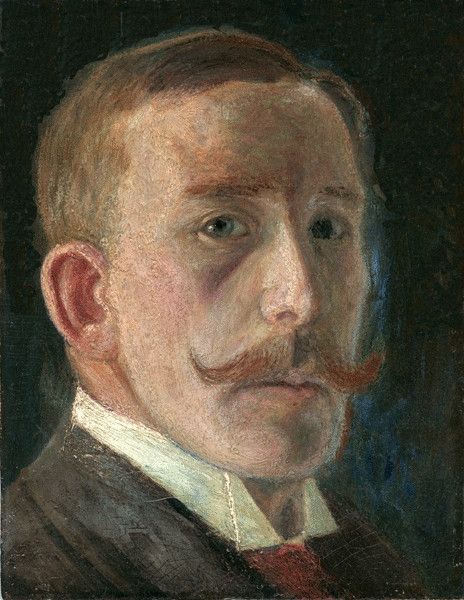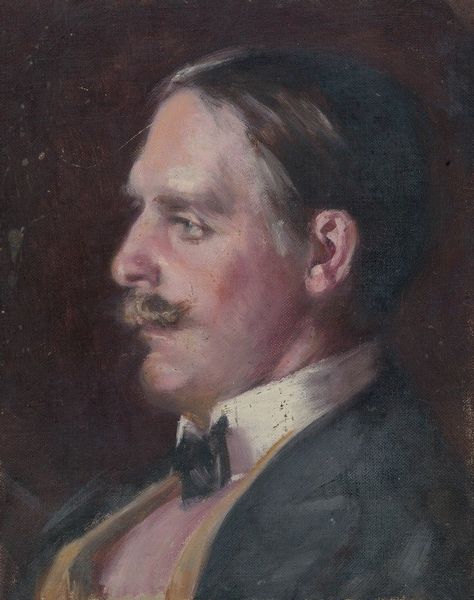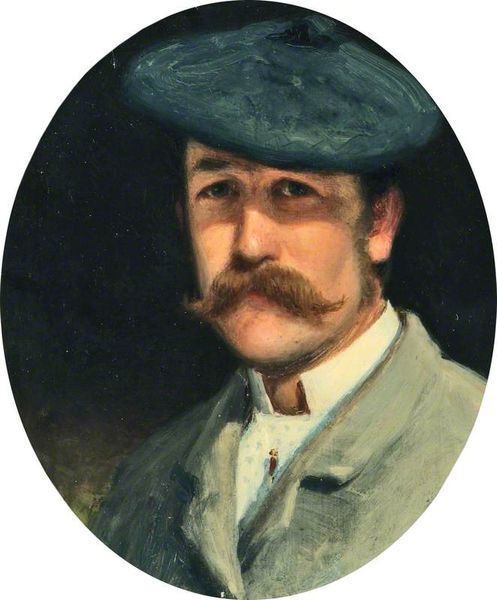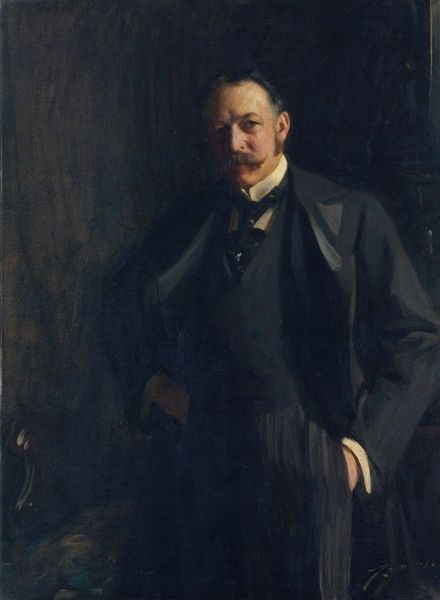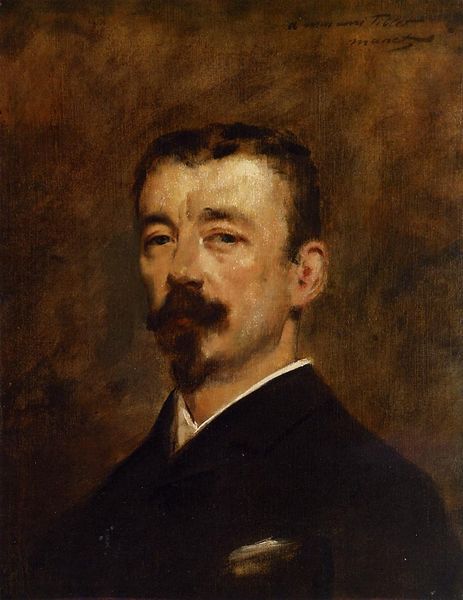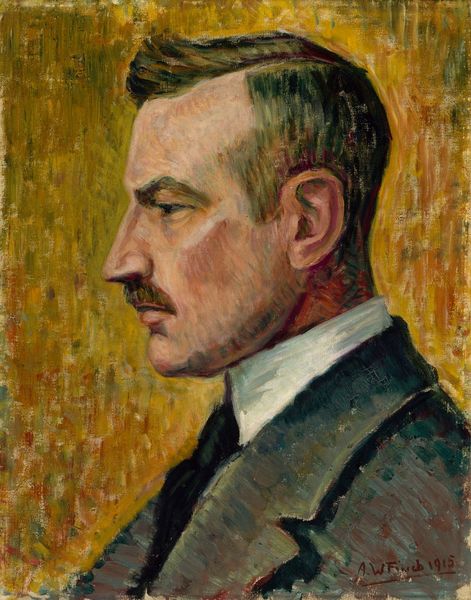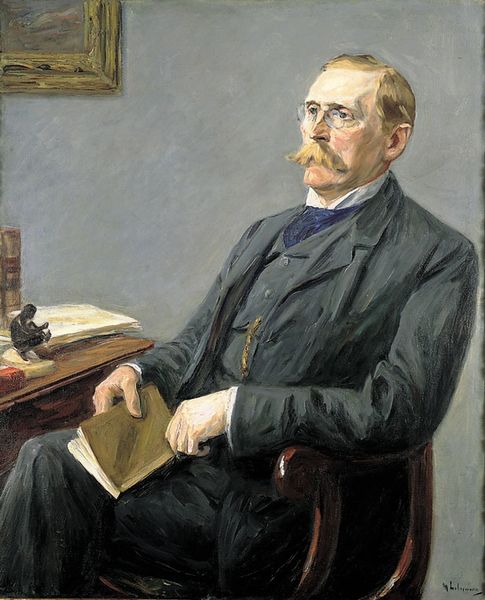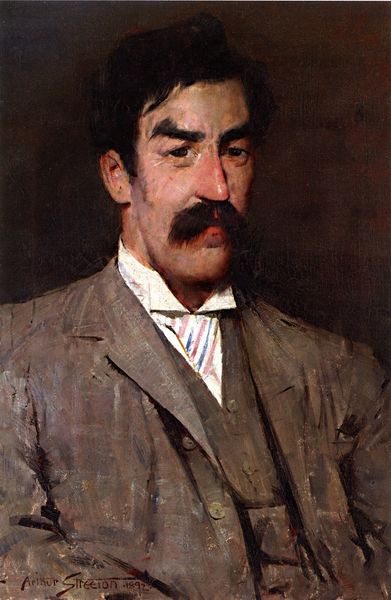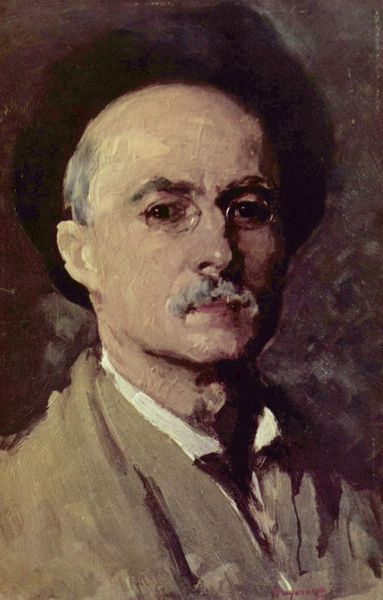
painting, oil-paint
#
portrait
#
painting
#
oil-paint
#
academic-art
#
realism
Copyright: Public domain
Curator: This is Albert Joseph Moore's oil painting "William Connal, Jr. Esq. of Solsgirth," created in 1883. Editor: There's a subtle, almost melancholic, air about this portrait. I’m drawn to the texture of the oil paint itself—you can almost feel the layers applied to capture the likeness. Curator: Moore was an interesting figure in the late 19th century. He sought beauty through idealized forms and aesthetic principles, but still functioned within the portraiture market to gain patrons. Connal was a wealthy Scottish businessman, whose patronage assisted many artists during his life. Editor: That’s apparent in the work’s materiality: look at the detailed rendering of his clothes, the clear labour used in creating such delicate patterns with paint, for someone to then wear. Is this purely for decoration or also to emphasize wealth, maybe to establish a clear distinction of social class? Curator: Absolutely. Connal, like many of the rising middle class at the time, would commission these types of portraits as a display of status, embedding themselves within the visual landscape of respectability. This image was a powerful declaration of his societal standing. The shell in the bottom left hints at Connal’s aesthetic sensitivity but its placement is curious... Editor: A signifier placed somewhat subtly; an art collector? Curator: He certainly was. This placement could denote cultivation without overtly signalling the portrait's commercial motivation: portraying Connal as a man of refined sensibilities. Editor: Considering the labor that went into creating this portrait for Connal’s personal use and its display to the public, there is the reality of class and access constructed and maintained by these objects. This portrait serves not only as a physical and material depiction but it reinforces specific cultural and political ideas about wealth and privilege. Curator: Yes. The museumification of such works is particularly charged in its continuation and perpetuation of established artistic and cultural hierarchies. Moore, through his careful application of oil, thus played a part in immortalizing, even justifying, a social structure. Editor: Ultimately, the portrait is another material means for preserving societal power and distinction, immortalising his influence beyond mere existence. It leaves me pondering how such portraits reinforce lasting power dynamics. Curator: Precisely; it provides a compelling insight into the confluence of art, capital, and representation in Victorian society, as we understand how such portraiture operated within societal and cultural hierarchies.
Comments
No comments
Be the first to comment and join the conversation on the ultimate creative platform.
